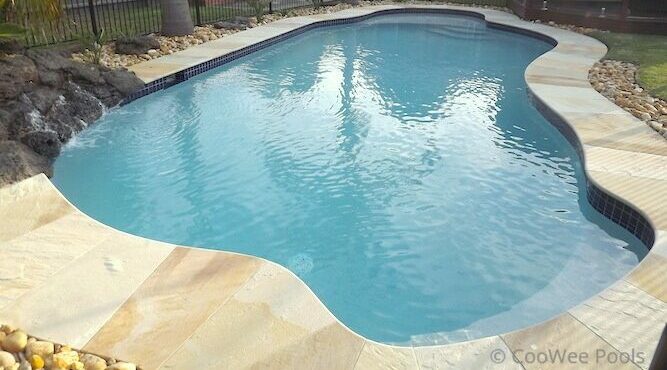If you own a pool, choosing the right pool coping colours is essential for enhancing its overall aesthetics and functionality. Pool coping acts as a border that both protects the edge of the pool and adds an element of style to it. A well-chosen pool coping colour can enhance the beauty of your pool and also increase its comfort and functionality. In this blog, we explore everything you need to know about pool coping colours, from choosing the right paint to the best materials for coping.
How Do I Choose a Pool Coping Colour?
Choosing a pool-coping colour can be challenging, but it doesn’t have to be. It would be best to consider factors such as the surrounding landscape, the pool interior colour, and the exterior of your house. The pool coping colour will also be dependant on what type of pool coping materials you choose. You can choose a colour that blends seamlessly with the existing design or opt for a contrasting colour to make your pool stand out. You must also consider the maintenance required for your pool coping, as some colours may be more complex to keep clean than others.
Different Types of Materials That Can Be Used for Coping
There are various types of materials you can use for coping, including natural stones, concrete, brick, and tiles.
- Natural Stones – Bluestone, Travertine, Limestone, Sandstone, Slate and Granite.
The use of natural stones is one of the most expensive pool coping options but is extremely durable, though some stones may need to be sealed. In harsh Australian conditions bluestone, sandstone and granite are some of the most popular pool coping materials due to their density and decreased porosity.
- Bricks
Brick is a very cost effective coping option, that can be used to tie your pool in with the existing aesthetic of your outdoor area, fence or home.
- Pre-Cast Concrete Pavers
These pavers come in a variety of colours and textures, which can suit the pre-existing aesthetic of your home. They also come in a uniform thickness, so they will look even and give off a clean profile when laid.
Furthermore, these materials can easily be sealed, in order to prevent water from causing damage or staining around your pool. Sealing helps to protect your coping against corrosives like chlorine, salt and water runoff, it also protects from constant exposure to the elements.
Should Pool Coping be Lighter or Darker?
The choice between lighter or darker pool coping colours depends on the surrounding landscape and the design of your pool. Lighter colours reflect sunlight, keeping the pool cool, while darker colours absorb heat, helping to warm the pool water. It would help if you also considered the longevity of your pool coping colour, as lighter colours tend to show dirt and stains more readily.
What is The Most Popular Pool Coping?
Regarding pool coping colours in Australia, the most popular option for many homeowners and designers is natural stone. This traditional colour choice offers a clean and timeless look that can blend seamlessly with various pool designs and landscaping themes.
For those seeking a more natural aesthetic, light, earthy neutrals are an excellent choice. These colours can bring a sense of warmth and comfort to the pool area and complement the natural beauty of the outdoors.
Tips for Incorporating Fun Accent Colours Into Your Pool Design
If you’re looking to add some fun and personality to your pool area, you can incorporate fun accent colours, such as bright blues, yellows, and greens into your pool design, through the pool interior. These colours can completely change the look and feel of your outdoor space.

